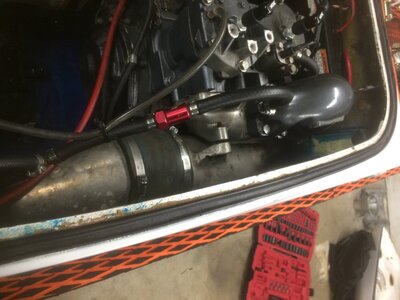Hi everyone I bought a used 1999 Superjet it has a Coffman pipe single 44 carb main jets 20 then 130 for hi and 115 on low. 1995 Stock waterbox. 14.5 to 118 Solas prop the ski has very bad bottom end I was informed that the valve control for waterflow is above the tee which is in correct wondering if that will fix the problem or how much of a difference a bpipe and aftermarket Waterbox would help.
You are using an out of date browser. It may not display this or other websites correctly.
You should upgrade or use an alternative browser.
You should upgrade or use an alternative browser.
Superjet problems
- Thread starter Mitchb
- Start date
- Location
- United States
The waterbox would help almost none, the bpipe would help some, but may not be worth spending and extra 400 dollars. I run lower pitch props in all of my boats and they are setup with more power than your boat. So that is definitely part of your problem. You want like a 13/17 solas i or 12/17 skat swirl or 9/15 hooker or 08 plus sj prop. I have had good luck with all of those.
With a lower pitch prop and some tuning you should be able to get good bottom end out of your setup. You could mill the head or get a billet head too. Seems to clean up the bottom quite a bit.
With a lower pitch prop and some tuning you should be able to get good bottom end out of your setup. You could mill the head or get a billet head too. Seems to clean up the bottom quite a bit.
iangdesign
Cats, lots of cats!
- Location
- United States
What engine are you running?
Ducky
Back in the game!
- Location
- Charlotte, NC
Usually you put the flow control valve After the T on the line to the pipe stinger/waterbox to restrict the flow of water to the waterbox..
I'm running a 1995 701 Superjet engineWhat engine are you running?
swapmeet
Brotastic
- Location
- Arlington TX
Flow control placement won't make that much difference. Lower Pitch prop will give you the low end grunt. Unless you're saying your ski is bogging at low RPM's... which could still be the prop but... it could be other things too.
Have you tested the compression with a good gauge?
Have you tested the compression with a good gauge?
Usually you put the flow control valve After the T on the line to the pipe stinger/waterbox to restrict the flow of water to the waterbox..
Exactly. If you keep it before the T, you are effectively reducing the overall water flow through the entire system by limiting the volume of water that you are allowing to exit. The effect is an overall hotter manifold, block, head pipe, and exhaust because you're cutting off your engine's ability to flow the water that is cooling it. However, if you move the valve after the T, you would flow a lot more water out of the pisser (bypass) while only restricting the amount of water that is getting sprayed into your stinger. Compared to your current setup, you would flow more water through your manifold, block, and headpipe which should make them all run cooler while letting your exhaust still get hot because of the decreased flow that is localized to your stinger. I believe both setups have their appropriate applications. Your current setup might be good for cold water situations where you need retard cooling in order to allow your engine to get hot enough to reach peak performance. The second option is more popular because of the belief that controlled restriction of water flowing into your stinger makes it easier for exhaust gasses to exit the system and allows you to reach optimal (higher) exhaust gas temperatures while still maintaining sufficient engine cooling. Make sense?

